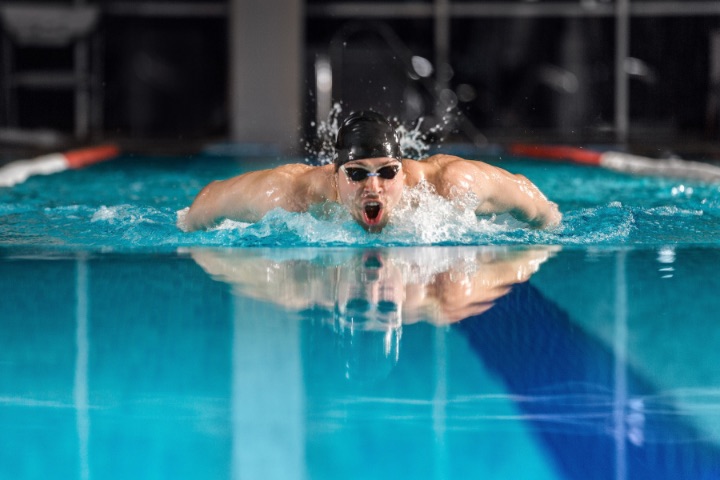Swimming, as a full-body exercise and a competitive sport, is one of the healthiest ways to stay in shape and maintain a high fitness level. However, like any sport, it has its unique physical demands and potential injuries. Among swimmers, back pain is one of the most common complaints.
This condition, often referred to as “Swimmer’s Back,” primarily affects the lower or lumbar spine, with competitive swimmers often sustaining back injuries due to the repetitive movements and high-intensity training involved in their stroke techniques.
Several factors contribute to the development of Swimmer’s Back:
The primary symptom of Swimmer’s Back is lower back pain or lbp, which can vary from a dull ache to severe pain, affecting daily activities and performance in the pool.

Photo Credit: drobotdean, Freepik
Diagnosis of Swimmer’s Back starts with a thorough physical exam and a detailed history of the symptoms.
Treatment of Swimmer’s Back focuses on alleviating pain and addressing the underlying cause.
Preventive measures are crucial in managing the lumbar spine strain often associated with regular swimming activities. These interventions aim to reduce the development or progression of Swimmer’s Back.

Photo Credit: katemangostar, Freepik
Proper Swimming Techniques:
Strengthening and Flexibility Exercises:
Even for recreational swimming, incorporating these preventive measures can potentially mitigate the risk of Swimmer’s Back.
Swimmers often develop low back pain due to the repetitive movements of hyperextension in swimming strokes, especially the butterfly and breaststroke. These place excessive loads on the spine, causing strain. Additionally, bending forwards and poor form can also cause pain. Core sturdiness is vital; if the abs are weak, this can lead to pain in the back.
Swimmers can prevent low back pain by practicing proper form, especially when performing the butterfly and breaststroke. Core stability exercises can strengthen the abdominal and back muscles, helping to maintain the spine’s alignment. Advice from a swim coach on technique can also help prevent pain in the back. Furthermore, swimmers should avoid excessive hyperextension and ensure their whole unit, including arms and torso, is firing in the proper sequence.
Treatment for back pain from swimming includes rest, physical therapy, and sometimes a lumbar corset for better support. Therapies focus on core stability exercises to strengthen the abs and extensor muscles. In some cases, modifications to the swimming cadence or changes in the training regimen may be necessary. If there is severe back pain, a medical consultation is advised.
Yes, elite swimmers and those specialising in strokes such as the butterfly and breaststroke, which involve high degrees of spinal flexion and torsion, are more prone to developing low back pain. Additionally, swimmers who have weak abdominal muscles or an improperly tilted pelvic bone may be more susceptible to back pain.